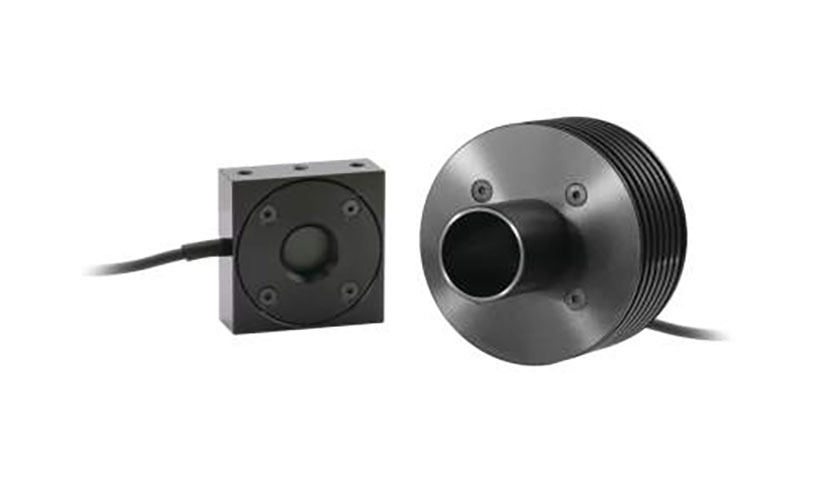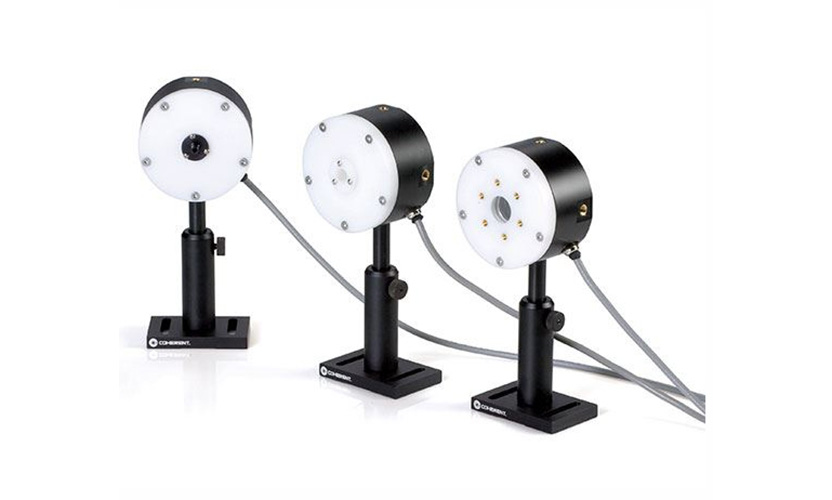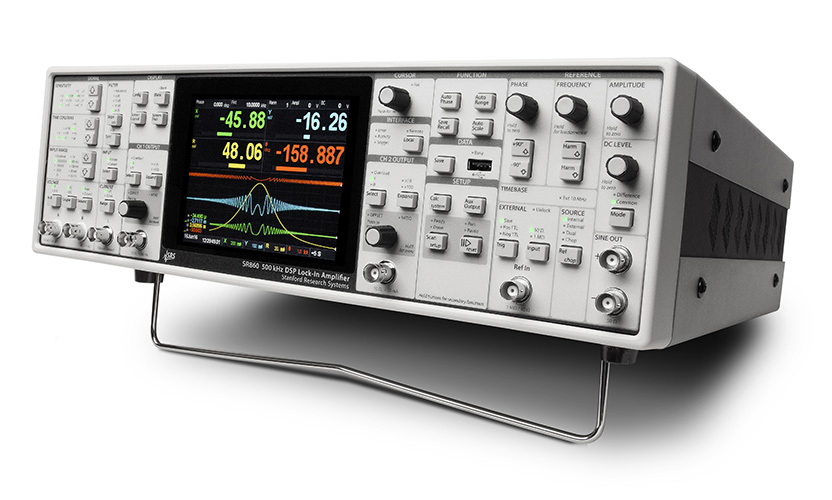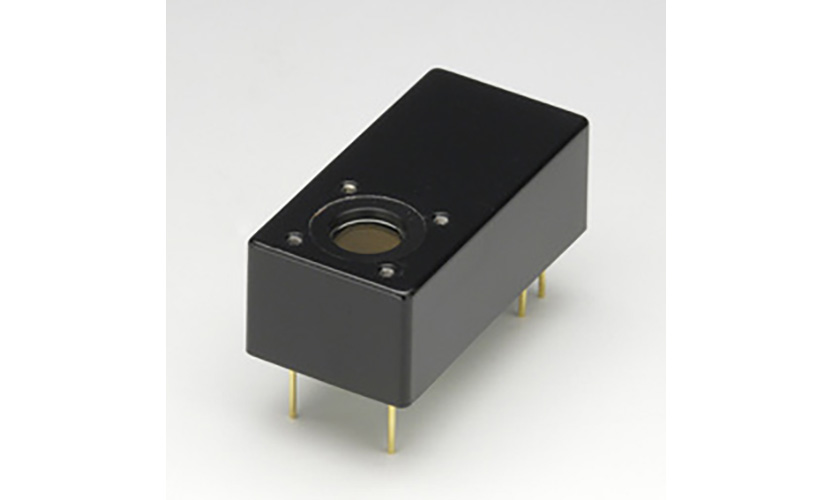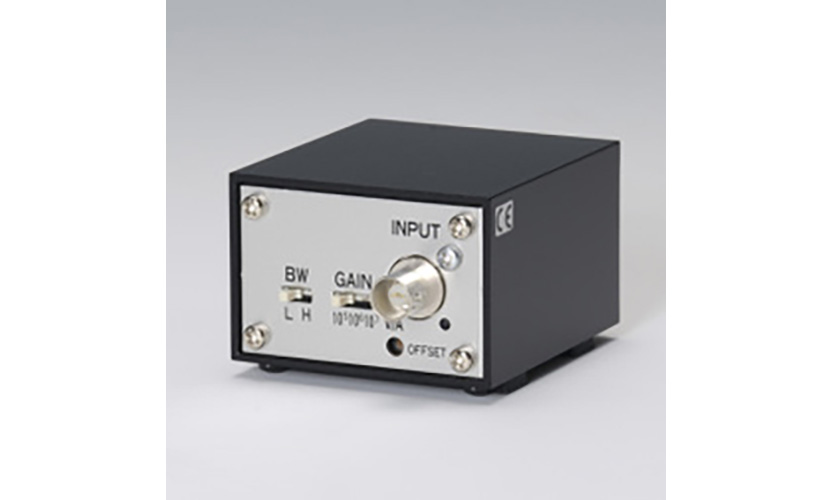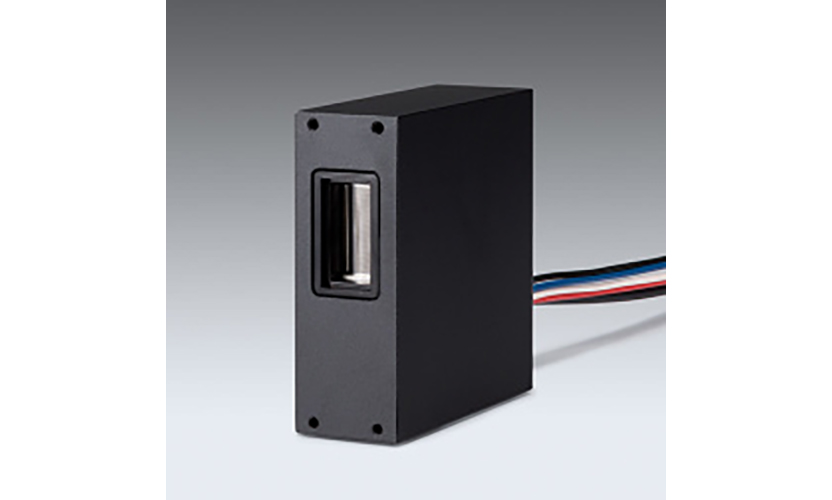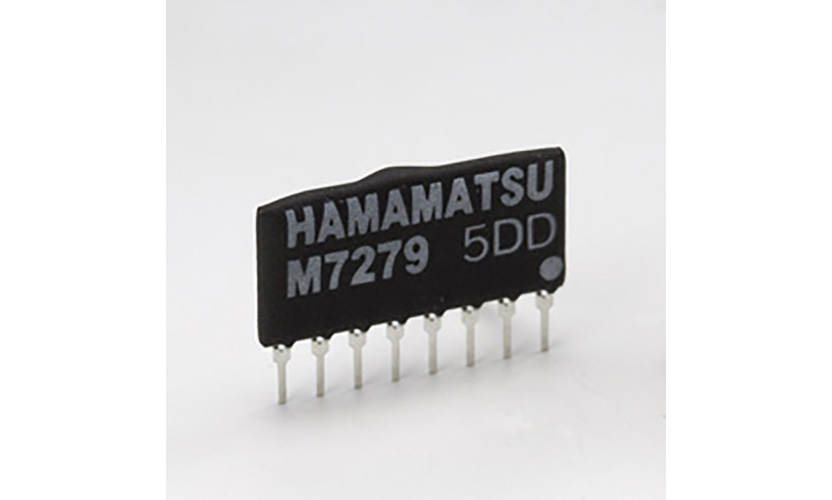Product Model
| model number | Sensor Size | Maximum Measured Power | Maximum power density | spectral range |
| 919P-003-10 | Ø9.5 mm | 3 W | 1 kW/cm² | 0.19 to 11 µm |
| 919P-010-16 | Ø16 mm | 10 W | 28 kW/cm² | 0.19 to 11 µm |
| 919P-020-12 | Ø12 mm | 4 W (standalone), 20 W (with a heat sink) | 23 kW/cm² | 0.19 to 11 µm |
| 919P-030-17HD | Ø17 mm | 30 W | 60 kW/cm² | 0.19 to 11 µm |
| 919P-030-18 | Ø17.5 mm | 30 W | 20 kW/cm² | 0.19 to 11 µm |
| 919P-040-50 | Ø50 mm | 35 W | 12 kW/cm² | 0.19 to 11 µm |
| 919P-050-18HP | Ø17.5 mm | 50 W | 0.5 kW/cm² | 0.24 to 2.2 µm |
| 919P-050-26 | Ø26 mm | 50 W | 12 kW/cm² | 0.19 to 11 µm |
| 919P-080-17HR | Ø17 mm | 80 W | 35 kW/cm² | 0.248 to 9.4 µm |
| 919P-150-16HR | Ø16 mm | 150 W | 35 kW/cm² | 0.248 to 9.4 µm |
| 919P-150-26 | Ø26 mm | 150 W | 12 kW/cm² | 0.19 to 11 µm |
| 919P-250-35 | Ø35 mm | 250 W | 10 kW/cm² | 0.19 to 11 µm |
| 919P-5KW-50 | Ø50 mm | 5000 W | 3 kW/cm² | 0.19 to 11 µm |
| 919P-600-65 | Ø65 mm | 600 W | 7 kW/cm² | 0.19 to 11 µm |
hallmark
Constant response over a wide wavelength range
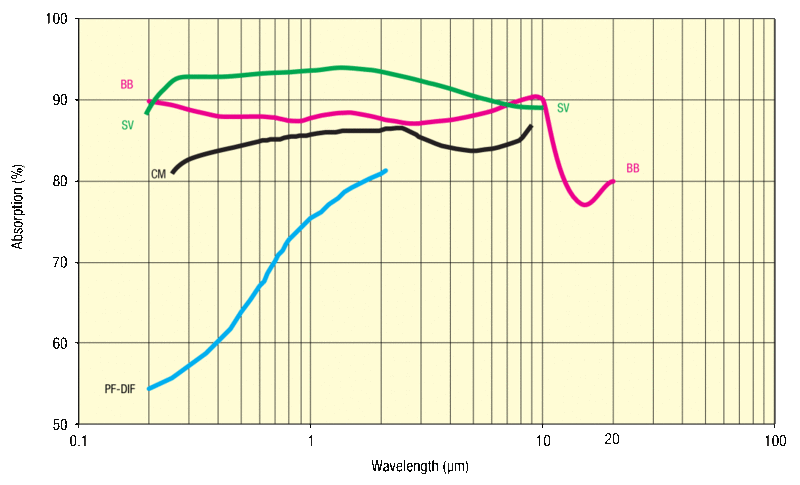
The response of a thermopile probe to an incident laser beam is characterized by its absorption. We use two different types of coatings in our sensors. Type BB is used in most models and has good constant absorption over the entire range of response wavelengths.Type PF is used in the 919P-050-18HP model and is designed for high energy density pulses.
Extensive testing of damage thresholds and pulse widths.
The 919P series thermopile probes have been extensively tested for damage thresholds with a variety of lasers. You can trust our specifications for peace of mind.

Thermopile Sensor Physics
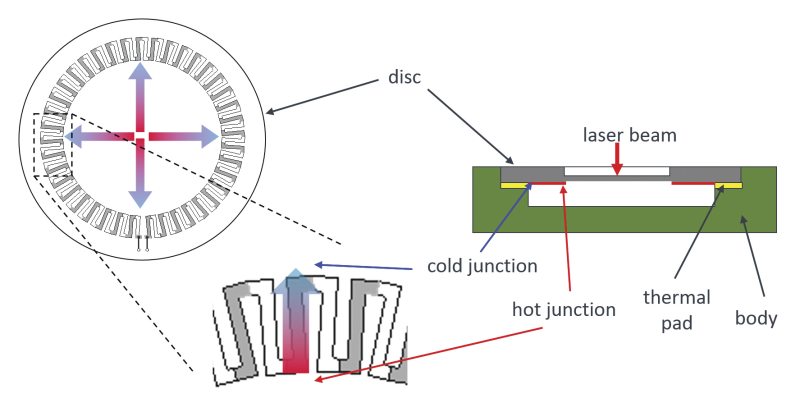
Thermopile optical power sensors are based on thermocouples. A thermocouple consists of two different metals connected in series. To detect radiation, one metal junction is usually darkened to absorb the radiation. The rise in temperature of this junction relative to the other non-irradiated junction produces a voltage. This effect is the basis of all thermocouple temperature sensors. The thermocouple materials used in thermopiles are usually bismuth and antimony, which have high thermoelectric coefficients. Individual thermocouples typically produce low output voltages, which results in low detection rates and limits their use as sensing devices. Therefore, one way to increase the output voltage is to connect many thermocouple connectors in series. All of the "hot" connections are placed close together to collect radiation. Typical operation of a thermopile is shown above. The thermopile disk consists of an array of circular thermocouples. Optical radiation is absorbed by the disk which produces the output voltage. The heat from the disk propagates radially through the thermopile on the opposite side of the disk where it is transferred to the heat sink. Due to broadband absorption, these devices are very sensitive in the infrared band. Due to the heating and cooling processes, the response time of the thermopile is very slow, typically seconds. Due to the time constraints, thermopiles are specialized for measuring power from continuous or quasi-continuous sources of radiation. For more information, see our Thermopile Sensor Physics Technical NoteThe
Ideal for high power measurements
Newport's new 919P thermopile probe series offers a range of detectors to meet the power measurement needs of continuous or pulsed lasers. They offer a broadband, frequency domain flat response with a maximum measurement power range of up to 5000 W. The new 919P thermopile probes are available in a range of sizes to suit a wide range of laser applications.
NIST Traceability
Each 919P thermopile probe includes a DB15 connector and internal EEPROM to store factory calibration data. Most probes are calibrated at three different wavelengths: 532 nm, 1.064 µm, and 10.64 µm. It is recommended that the thermopile probe be calibrated annually to ensure NIST traceability.
Cross Reference Diagram for Traditional 818P Series Thermopile Sensors
Please note that the 919P series thermopile sensors are intended to replace the 818P series sensors. Please also note that these two series are not compatible with some optical power meter models. The table below provides the recommended replacement 919P models for each 818P series model. Although the specifications of the recommended models are closest to the obsolete models, they are not identical. The user must carefully compare each specification.
Detector selection for lasers
If you already own Newport and Spectra Physics lasers, see ourOptical Detector Selection Guide to see the recommended detector models for each laser.
Flexible fiber optic adapters
The 919P-SMA and 919P-FC fiber optic adapters are available for most detector models. Remove the nozzle on Models 919P-003-10 and 919P-010-16 and install the fiber optic adapter directly onto the threads. Adapter rings and fiber optic adapters are available to accommodate various aperture sizes. See the tables for the appropriate adapter ring for each detector model. Please note that some models are not available with fiber optic adapters.

